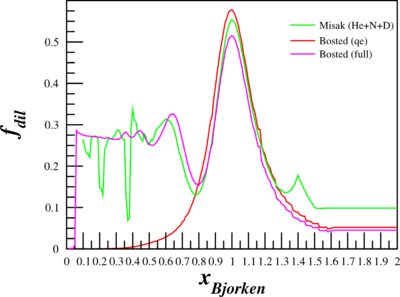Elong-14-03-27
ptrates.f Addition Check
| D & N check | All Cross-Sections |
|---|---|
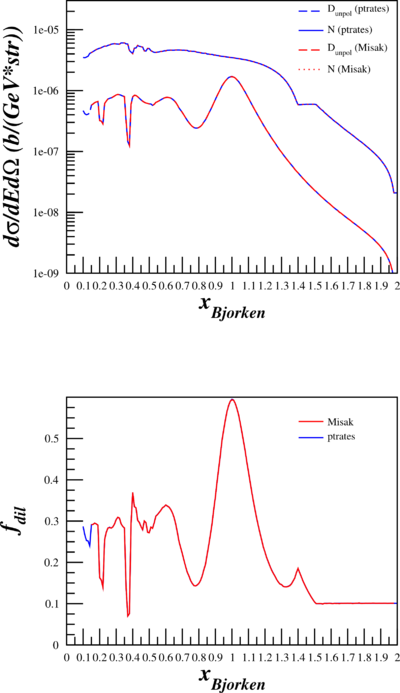 |
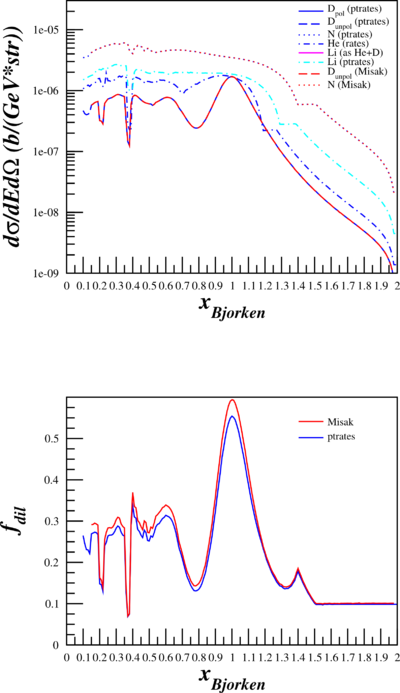
|
First thing, after a number of trouble-shooting steps (mainly making sure that all of the variables pass correctly to inclusive.f since I'm putting them in from ptrates.f instead of the normal input file), I was able to get Misak's code integrated into my rates code so that when you run either the cross sections come out the same. These are at E=6.6GeV, E'=6.07 GeV, theta=9.51deg, since those were the conditions I used previously to compare Bosted's code to Misak's. (Note: For the plots to the right, it's assuming ND3 target)
Once I made sure that the deuterium and nitrogen were working correctly, I added Misak's calculations for the other cross sections.
This immediately brings to mind how previously the Bosted code was giving a smaller dilution factor than Misak's. Comparing the full Misak dilution (including N, He, & D) to Bosted's code looks like this:
Rates with Sargsian's Cross Sections
Given how ptrates.f scans over tiny acceptances in theta and E', running it with Misak's code greatly increases the amount of time it takes to complete. To get a sense of how bad larger bins are and how they affect the uncertainties & rates, I used three different bin sizes:
| # E' bins = 408, # Theta bins = 10, Run Time = 1202 seconds | # E' bins = 20, # Theta bins = 19, Run Time = 96 seconds | # E' bins = 20, # Theta bins = 10, Run Time = 74 seconds |
|---|---|---|
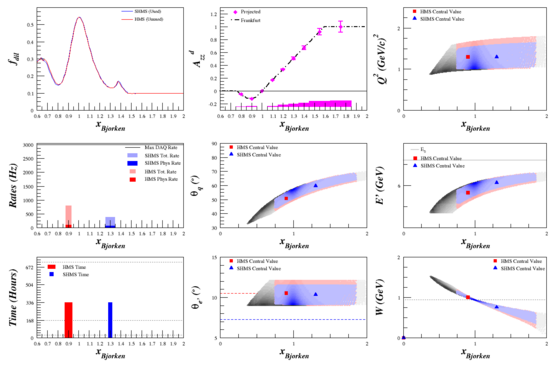 |
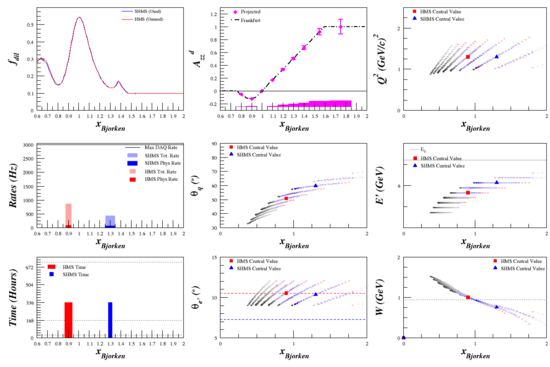 |
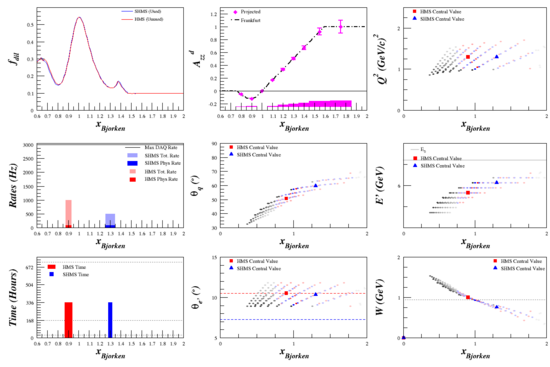
|
For the most part, going to larger bins/lower resolution overestimates the background rates and underestimates the uncertainties. Not by much, but it looks like it would be fine to use the lower resolution plots when scanning over many Q^2 to save some computing time.
Comparison with Bosted
Below are identical ND3 calculations, with the only difference being whether the cross sections were calculation using Sargsian's code, Bosted's full code, or Bosted's quasi-elastic code.
| Sargsian |
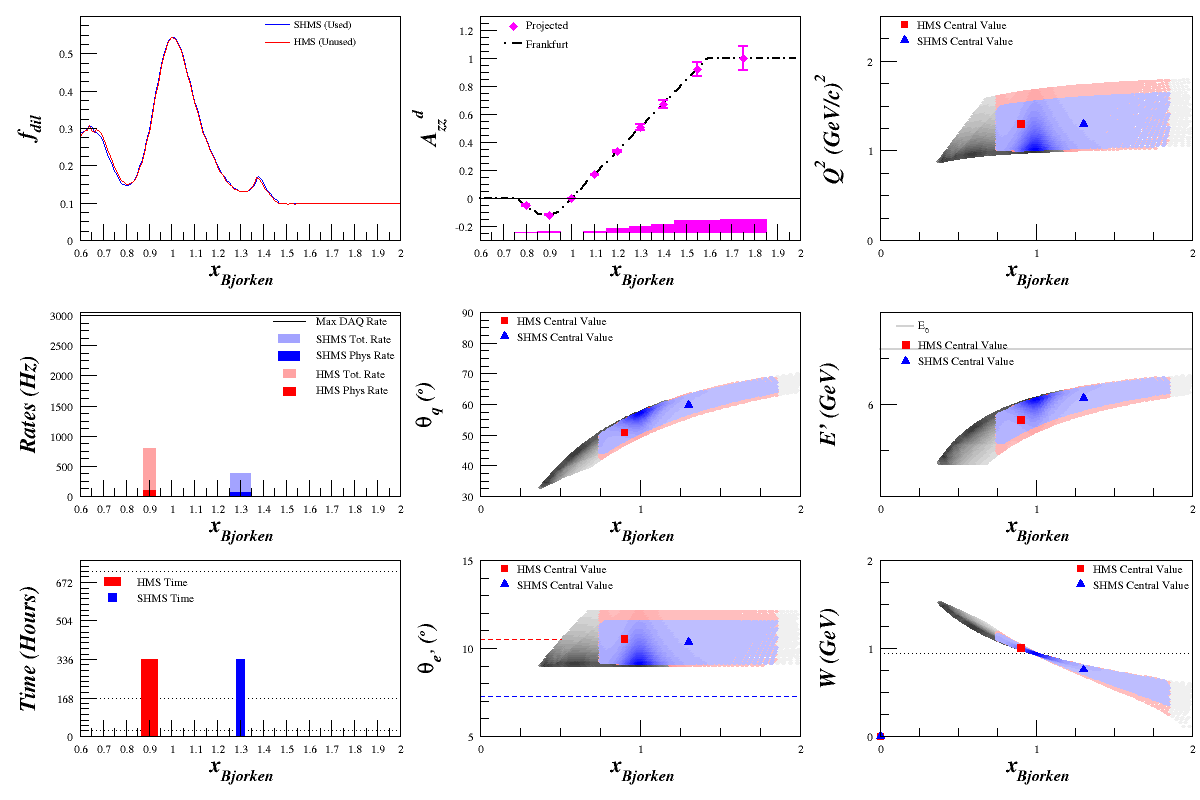
|
| Bosted (Full) |
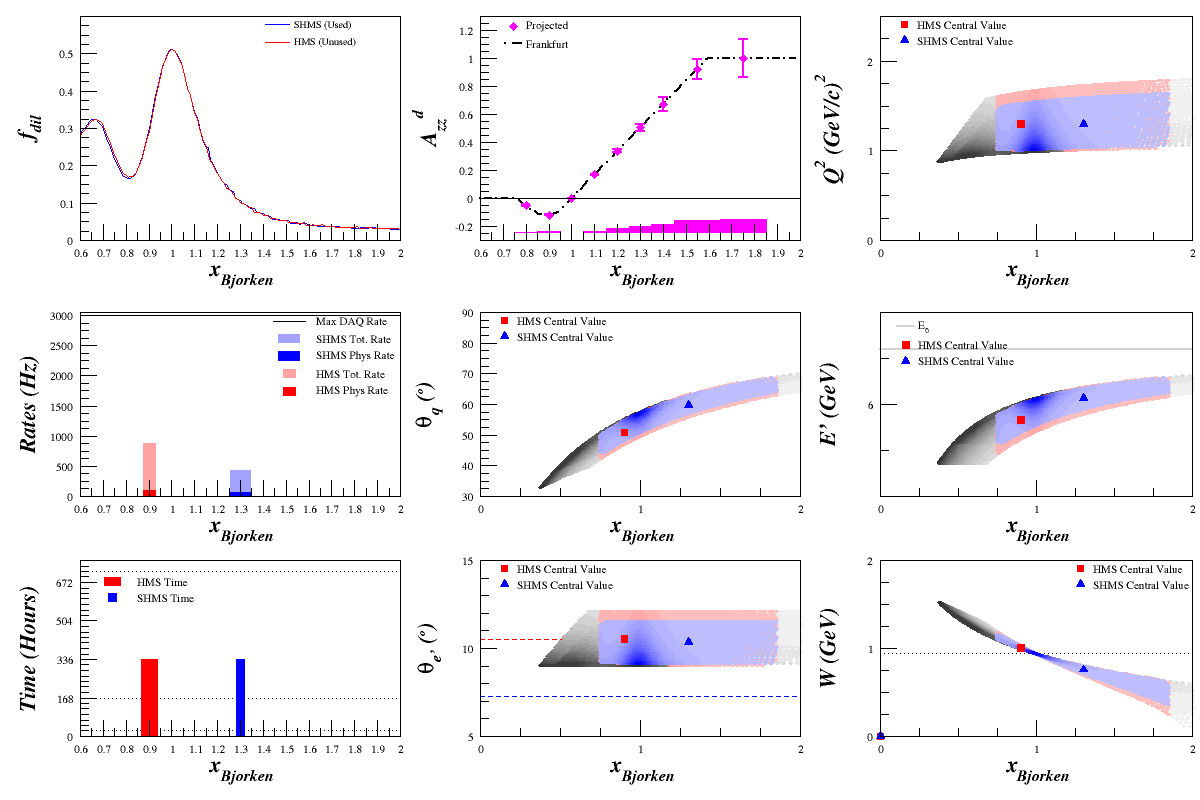
|
| Bosted (QE) |
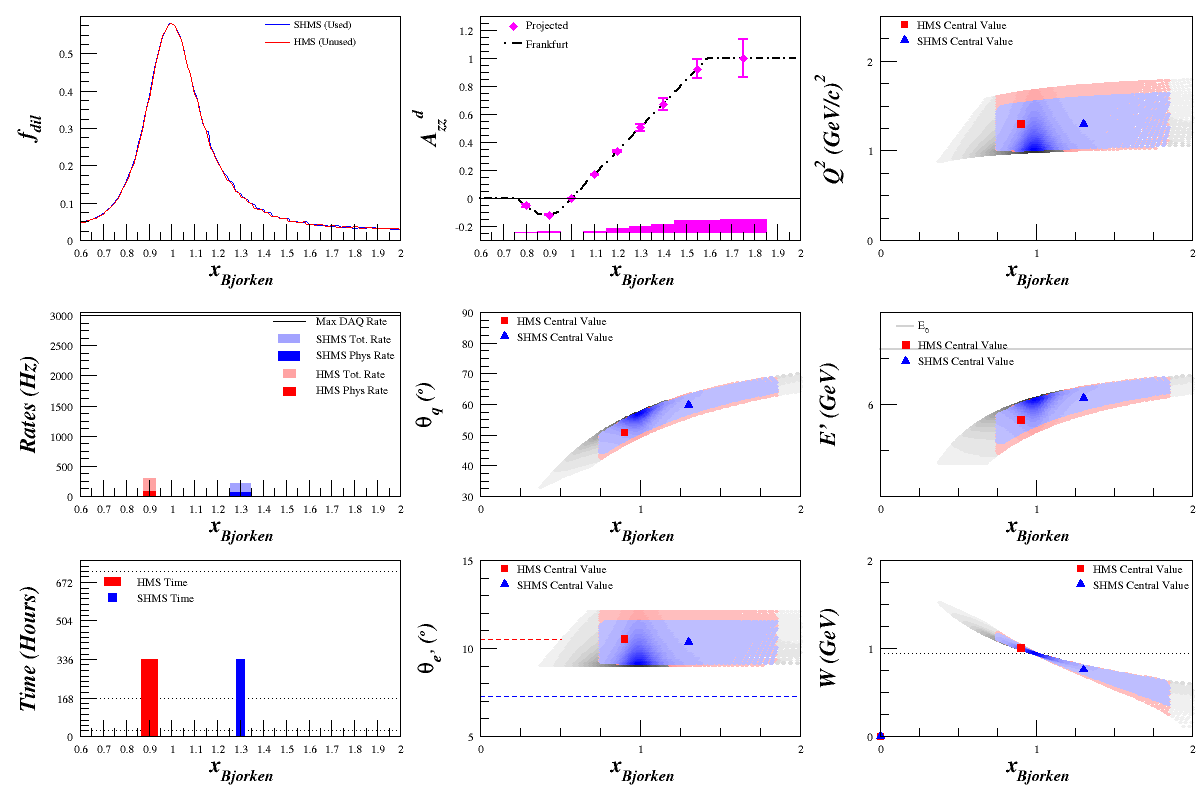
|
